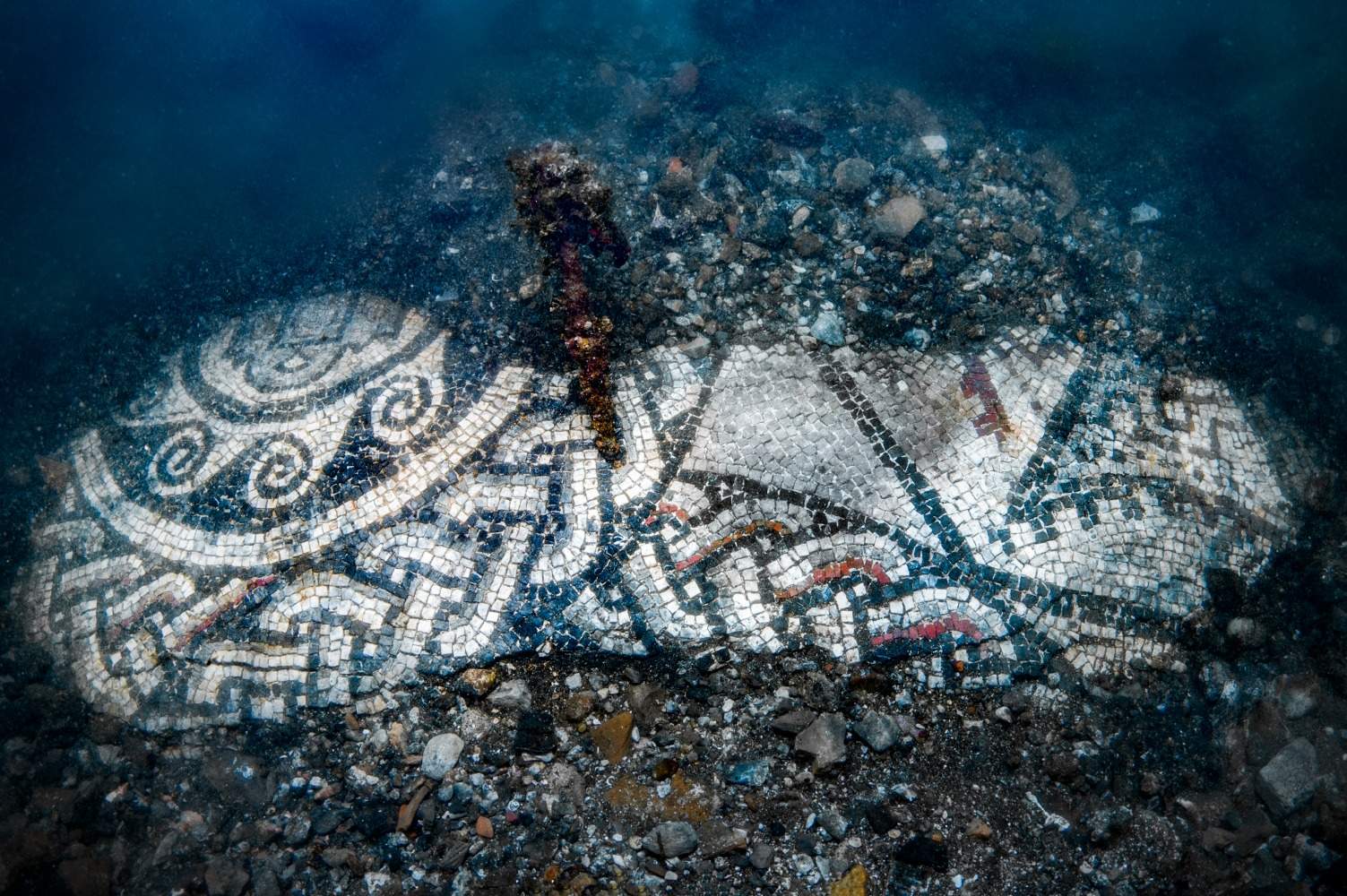The Bay of Naples continues to amaze. After the surprising discovery in January with the discovery of the mosaic of Portus Julius, the seabed of the Submerged Park of Baiacontinues to give valuable pieces: in fact, it is these days the discovery of another beautiful mosaic with geometric shapes and particular colors. Giving news of this is directly the Campi Flegrei Archaeological Park through their social profiles where they explain that during “an ordinary control reconnaissance in the Terme del Lacus” emerged “tesserae there where usually it was only sand. A new room, a new mosaic, with a psychedelic interweaving of geometric lines, rendered with colored tiles,” they write with appropriate enthusiasm. “But not only that!” they continue. “A very special image, in the center of the main round: what is it? We don’t know yet ... we have a long, beautiful work ahead of us after this Easter Monday.” The images of the discovery are by underwater nature photographer Edoardo Ruspantini.
The Baia Underwater Park is a marine protected area located on the coast of the metropolitan city of Naples north of the Bay of Naples. Baia is referred to as “the underwater Pompeii,” as it has a structure similar to that of the Roman city and there are remains that are still very well preserved. It is an exceptionally valuable archaeological reality that the phenomenon of the lowering of the coast due to bradyseism has sunk what was a resort as it was, all in one piece. Thus, beneath a thin layer of sand, mosaics, statues and furnishings, columns and walls, traces of frescoes, sculptures, and road layouts can be discovered five meters below sea level. What the sea has covered is a wide strip of ancient coastline that one has to imagine in continuity with the structures on land that make up the Archaeological Park of the Baths and that overlooked a much narrower bay than the present one, formerly Baianus lacus, which was accessed by an artificial channel. Among the main submerged buildings visible is the Claudian-age nymphaeum, located at -7 m on the seabed in front of Punta Epitaffio, while, to the east of the nymphaeum is a villa attributed to the Pisoni family because of the boluses imprinted on a lead water pipe.
“In the small portion of the floor currently uncovered,” Park explains about the discovery of the blue-colored mosaic, “several intersecting geometries and perhaps the edge of the composition can be glimpsed. The general pattern of the composition as for the moment we assumed by looking at other examples, especially in Tunisia. It is a series of tangent circles, separated by intersecting braids, generating hexagons with concave sides. But possible surprises may occur in the course of the excavation.”
According to speculation, the construction around the mosaic could be part of the work commissioned by Agrippa in the first century B.C. to block pirate raids by Sextus Pompey. Among the most valuable rooms, which are now sunken, is the nymphaeum of Punta Epitaffio, a triclinium serving as a banquet hall dating back to the time of Emperor Claudius, whose statues have been transferred to the Archaeological Museum of the Phlegraean Fields where the room has been reconstructed.
 |
| New underwater mosaic discovered in Baia, featuring intertwining blue lines |
Warning: the translation into English of the original Italian article was created using automatic tools. We undertake to review all articles, but we do not guarantee the total absence of inaccuracies in the translation due to the program. You can find the original by clicking on the ITA button. If you find any mistake,please contact us.